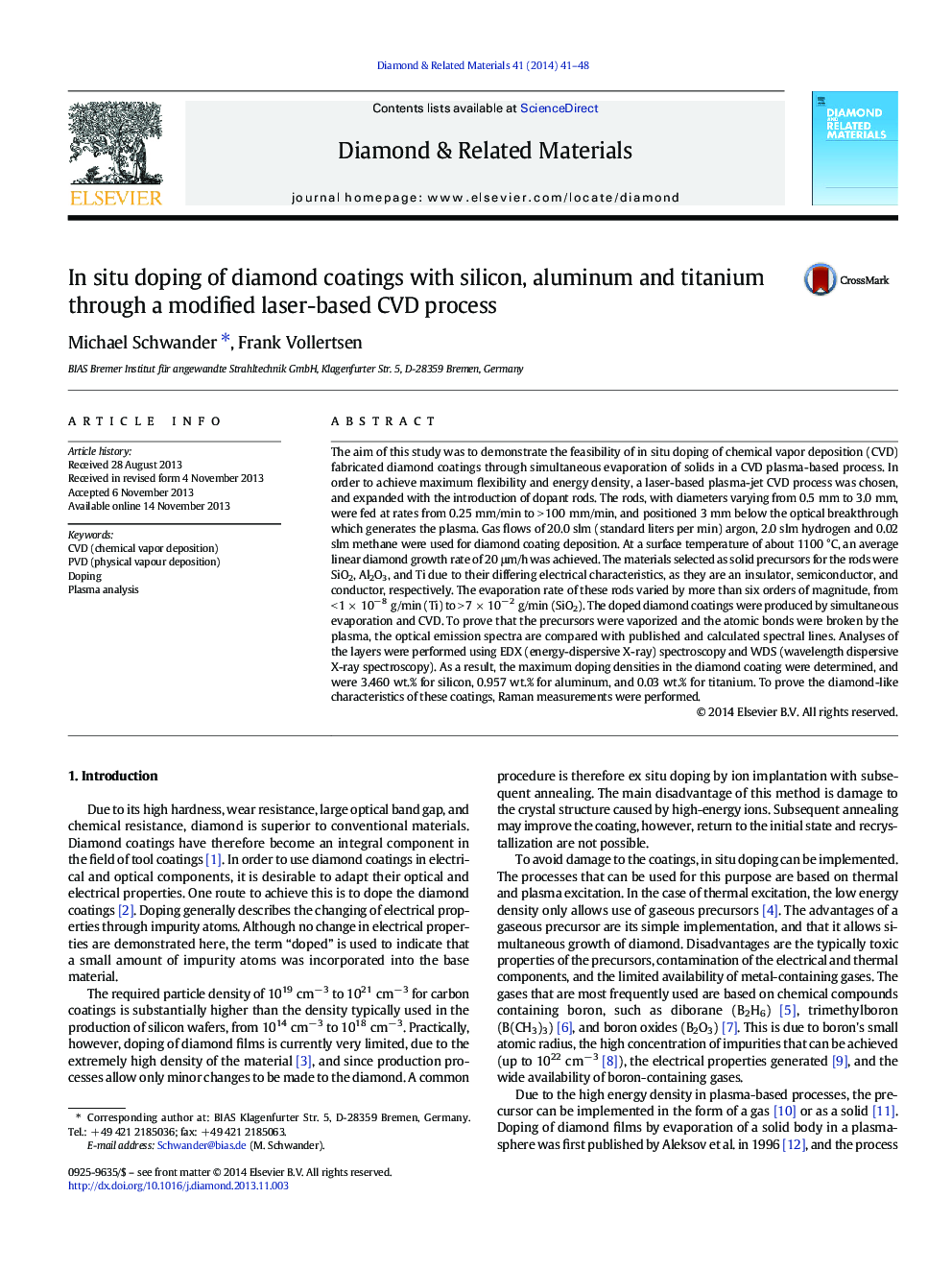| کد مقاله | کد نشریه | سال انتشار | مقاله انگلیسی | نسخه تمام متن |
|---|---|---|---|---|
| 702322 | 1460790 | 2014 | 8 صفحه PDF | دانلود رایگان |

• A laser-plasma process was expanded with the introduction of rods.
• The composition and energy distribution of the plasma were determined.
• The precursors SiO2, Al2O3 and Ti were fed into the plasma flame.
• The composition of the modified plasma flame was determined.
• Doped diamond coatings were grown and analyzed.
The aim of this study was to demonstrate the feasibility of in situ doping of chemical vapor deposition (CVD) fabricated diamond coatings through simultaneous evaporation of solids in a CVD plasma-based process. In order to achieve maximum flexibility and energy density, a laser-based plasma-jet CVD process was chosen, and expanded with the introduction of dopant rods. The rods, with diameters varying from 0.5 mm to 3.0 mm, were fed at rates from 0.25 mm/min to > 100 mm/min, and positioned 3 mm below the optical breakthrough which generates the plasma. Gas flows of 20.0 slm (standard liters per min) argon, 2.0 slm hydrogen and 0.02 slm methane were used for diamond coating deposition. At a surface temperature of about 1100 °C, an average linear diamond growth rate of 20 μm/h was achieved. The materials selected as solid precursors for the rods were SiO2, Al2O3, and Ti due to their differing electrical characteristics, as they are an insulator, semiconductor, and conductor, respectively. The evaporation rate of these rods varied by more than six orders of magnitude, from < 1 × 10− 8 g/min (Ti) to > 7 × 10− 2 g/min (SiO2). The doped diamond coatings were produced by simultaneous evaporation and CVD. To prove that the precursors were vaporized and the atomic bonds were broken by the plasma, the optical emission spectra are compared with published and calculated spectral lines. Analyses of the layers were performed using EDX (energy-dispersive X-ray) spectroscopy and WDS (wavelength dispersive X-ray spectroscopy). As a result, the maximum doping densities in the diamond coating were determined, and were 3.460 wt.% for silicon, 0.957 wt.% for aluminum, and 0.03 wt.% for titanium. To prove the diamond-like characteristics of these coatings, Raman measurements were performed.
Journal: Diamond and Related Materials - Volume 41, January 2014, Pages 41–48